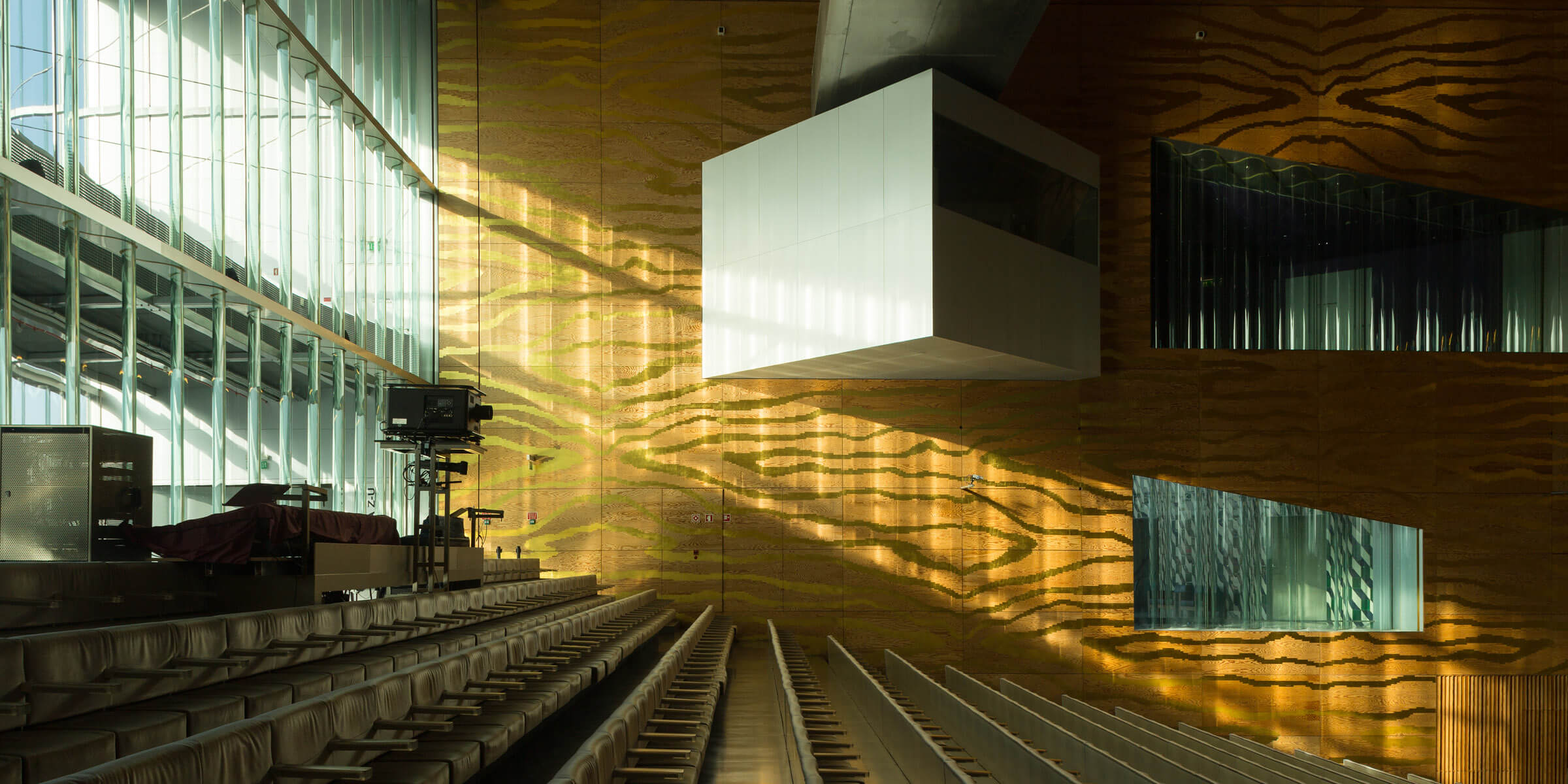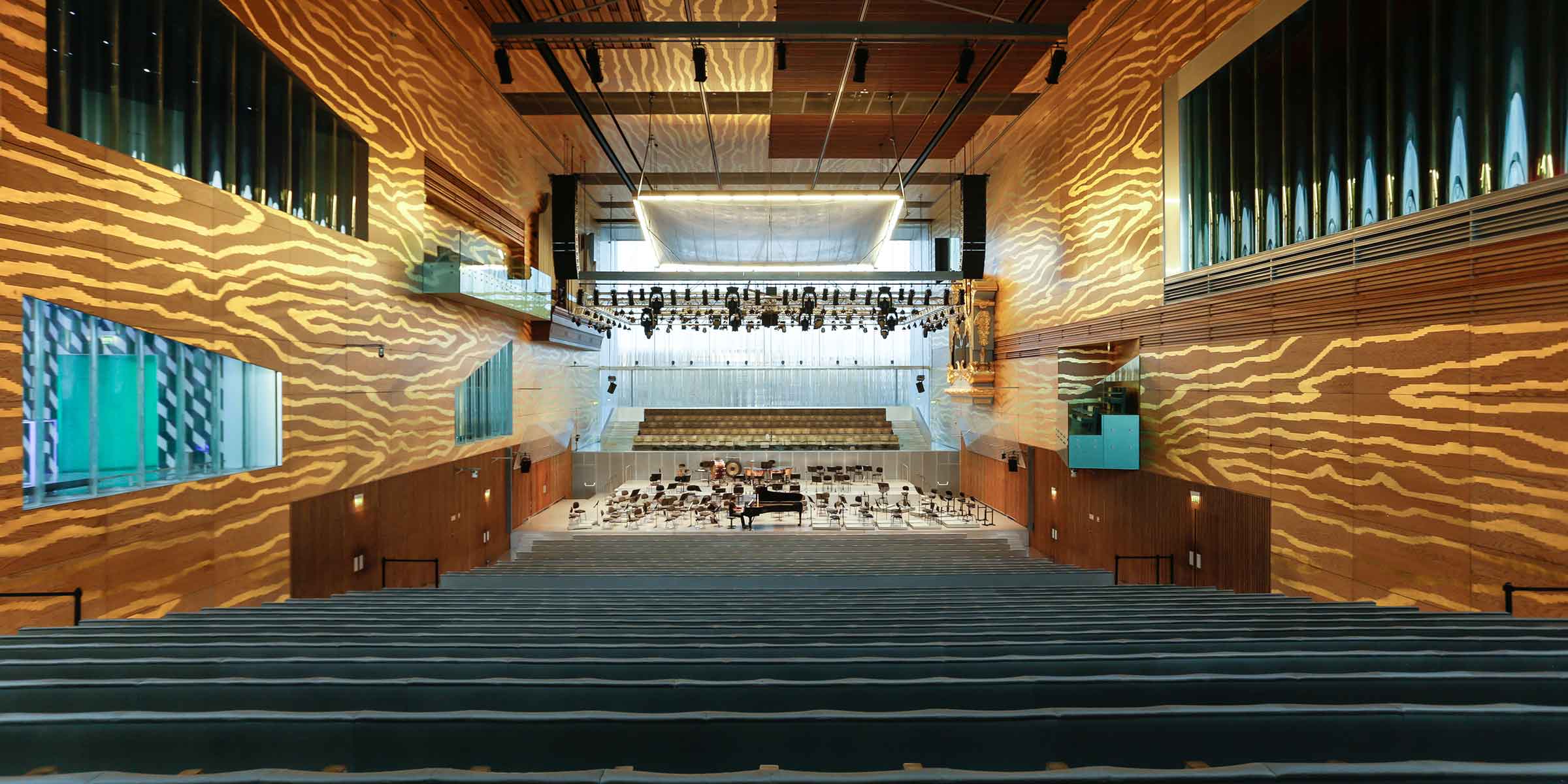Sala Suggia
Considered the heart of Casa da Música, the Suggia Hall – named in honour of the Porto cellist Guilhermina Suggia, a world-renowned exponent of the instrument in the first half of the 20th century – serves as the anchor for the entire building, thereby enabling its main pathways to unfold around it. With seven windows connecting it to both the exterior and other spaces, providing different angles of vision, it is one of the few concert halls where music can be played exclusively with natural light.
The decorative arts and key periods of Western Music History receive a special deferential treatment in the Suggia Hall, evident in examples such as the gilded woodwork or the pipe organs. These evocations coexist and interact with a set of unmistakably contemporary elements, including the canopy, the control room, and the maintenance bridge.
The acoustics of the main auditorium are undeniably excellent. All the finishing materials were chosen with this concern in mind: Nordic pine plywood for walls and the ceiling; curved glass for sound wave compensation and divergence, and the fabric for the seats.
Unlike auditoriums exclusively dedicated to classical and symphonic music, Casa da Música also presents other genres, hence the Suggia Hall having galleries for technical lighting equipment above the ceiling and a maintenance bridge crossing it, which can also slide over it. The equitable distribution of sound ensures that all the seats in the hall are excellent.
The arrangement of the chairs, without aisles or a central distribution corridor, provides harmonious access to all seated areas. With this purpose in mind, a sliding mechanism was developed in the seats, allowing a person to traverse an entire row of chairs without anyone having to stand up.
Floors 2 to 4
Capacity: 1,238 seats

